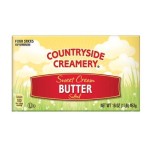Butter, a dairy product cherished for its rich flavor and versatility, is created by churning cream or milk, separating the butterfat from the buttermilk. This process results in a solid emulsion of fat globules in water, giving butter its characteristic smooth texture and creamy consistency. The flavor of butter is complex and nuanced, influenced by factors like the diet of the cows producing the milk, the processing methods used, and whether it's salted or unsalted. From its subtle sweetness to its nutty undertones, butter contributes a depth of flavor that enhances countless dishes.
Beyond its delectable taste, butter plays a crucial role in cooking and baking. It adds richness and moisture to baked goods, creating flaky pastries and tender cakes. In savory dishes, butter serves as a flavor carrier, enhancing the taste of herbs, spices, and other ingredients. Its ability to emulsify sauces and create smooth textures makes it indispensable in countless culinary applications. Whether spread on toast, used in sautéing vegetables, or incorporated into complex sauces, butter remains a kitchen staple, prized for its ability to elevate both simple and elaborate meals.

